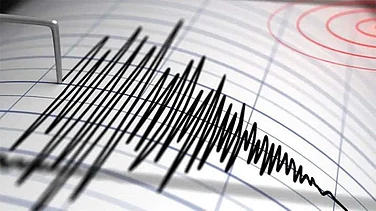India gained independence from the British in 1947 and became a Republic three years later. Hundreds of princely states and many colonial enclaves integrated with the country to secure their future politically, militarily and economically. However, many separatist movements have marked India’s post-independence period. In view of the recent diplomatic fallout between India and Canada over the killing of a separatist leader belonging to the pro-Khalistan movement that aims to achieve an independent state, we here look at several such secessionist movements that the country has been witness to.
Jammu and Kashmir
The rise of militancy and terrorism in Jammu and Kashmir dates back to the rule of Maharaja Hari Singh. The princely state, with a majority population of Muslims, had the option to choose between the new Dominions of India and Pakistan or to remain independent. It opted for the latter. However, after India and Pakistan gained independence, the latter's troops invaded J&K, forcing Hari Singh to call the Indian government for help. An ‘Instrument of Accession’ was eventually signed between the two, on 26th October 1947, in return for military aid and assistance, which was accepted by the Governor-General the next day. While the Government of India accepted the accession, it added the proviso that it would be submitted to a "reference to the people" after the state is cleared of the invaders, since "only the people, not the Maharaja, could decide where Kashmiris wanted to live." It was a provisional accession. India and Pakistan have fought three wars over the land of Kashmir, with two countries demanding the rule over it, yet no such political solutions were found.
Over the years, J&K has become one of the most politically unstable states with the Indian government often calling it a hub of terror. In 2019, the BJP-led government abrogated the special status of Jammu and Kashmir and bifurcated it into two union territories of Jammu and Kashmir, and Ladakh.
Punjab
The Khalistan movement in Punjab finds its roots in the demands of a separate state of ‘Khalistan’ (Land of Khalse) comprising parts of Indian Punjab, parts of Punjab in Pakistan, and parts of Himachal Pradesh and Haryana. The first call for Khalistan was given in 1940 in the pamphlet ‘Khalistan’ when the British Empire was on the verge of collapse. The movement has continued since then, peaking in the 1980s, and receiving political and financial support from the Sikh diaspora. The issue escalated with Operation Blue Star and anti-Sikh riots of 1984. However, in the 1990s, the insurgency petered out, and the movement failed to reach its objective due to multiple reasons, including a massive police crackdown on separatists, factional infighting, and disillusionment from Punjab's Sikh population. Over the years, political leaders in Punjab have alleged that the movement gains its confidence from the support it receives from Pakistan's Inter-Services Intelligence (ISI) and Khalistani sympathisers in Canada, Italy, and the UK.
Manipur
Tensions in Manipur go back to the foundation years of the Kangleipak State in 1110. Manipur was embroiled in the politics of statehood after it was conquered by the British and eventually became a state of India on 21st January 1972. Despite achieving statehood, insurgency continued and on 8th September 1980, Manipur was declared an area of disturbance, when the Indian government imposed the Armed Forces (Special Powers) Act, 1958 on the region. Over the years, the rise of Naga insurgency in the neighbouring state led to the emergence of the National Socialist Council of Nagaland (NSCN) and its activities in Manipur and tensions further increased with the rise of other militant factions, including guerilla groups formed by the Kuki tribes. The ongoing ethnic violence in Manipur has its roots in the sociopolitical history of these groups.
Other Northeast States
A majority of secessionist movements in India have their roots in the northeastern states, including Assam, Nagaland and Mizoram. While the United Liberation Front of Asom was formed in April 1979 to establish a sovereign state of Assam for the indigenous people through an armed struggle, the Muslim United Liberation Tigers of Assam (MULTA), established in 1996, advocated a separate country for the Muslims of the region. In 1990, the Indian government banned ULFA officially and labelled it as a terrorist group. Similar demands of a separate state have also been there in Nagaland and Mizoram. In Mizoram, for example, the Mizo Union has long demanded a separate state due to discrimination at the hands of the Assam government whereas in Nagaland, the demand for a separate state for Nagas, called Nagalim, still lives on.


























